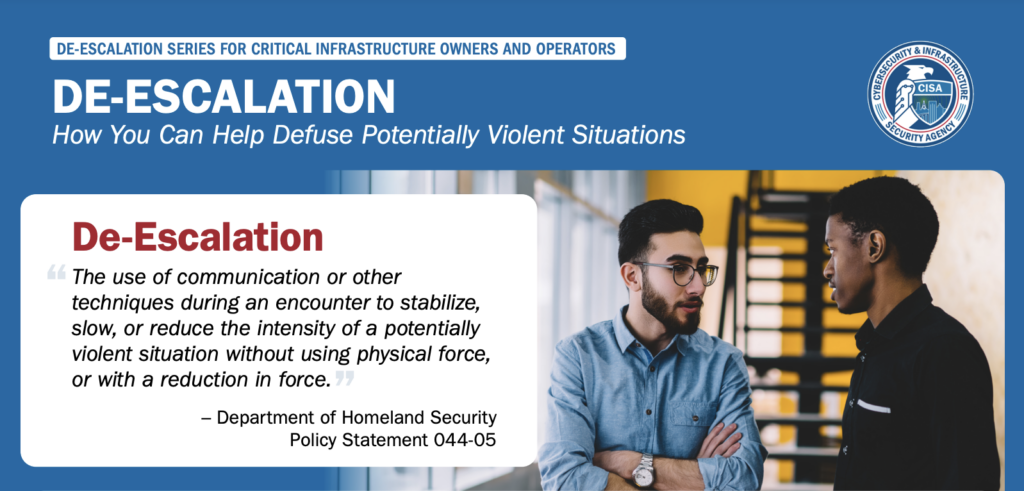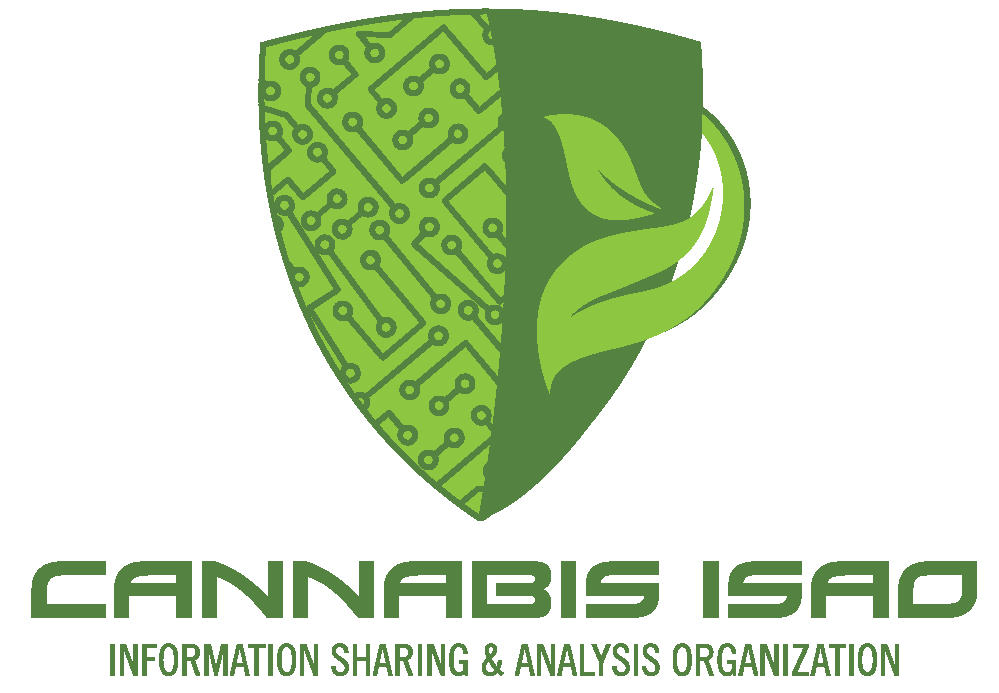In our weekly Library Card Series we highlight a selection from our resource library to help introduce the content to our industry partners.
In this weeks Library Card Series we will take a look at the recently released De-escalation Series from the Cybersecurity and Infrastructure Security Agency’s (CISA). Understanding de-escalation techniques is vital for those in the retail side of the cannabis industry as dispensaries and delivery drivers continue to be targeted for robberies. While many of these crimes happen after hours, day time robberies are not unheard of. As recently as August 9 three men robbed a dispensary just outside Seattle, Washington with multiple guns. The individuals forced everyone onto the floor and collected cell phones so that nobody could alert the authorities. These type of situations can be extremely stressful, particularly for frontline employees. The resources below should be considered when developing employee training programs and can help to not only help resolve criminal activity peacefully, but also to identify suspicious behavior which could prevent the activity in the first place.
CISA developed their deescalation series to educate employees, business owners, and others on four main points:
- Recognize the warning signs of someone on a path to violence;
- Assess if the situation or person of concern is escalating, or if an emergency response is needed immediately;
- De-escalate the situation currently taking place through purposeful actions, verbal communication, and body language; and
- Report the situation through organizational reporting to enable assessment and management of an evolving threat, and 9-1-1 for immediate threats.

This series follows CISA’s The Power of Hello, which was covered in a previous blog post, which was basically an introduction to deescalation methods. Below we will share a few highlights from each of the four documents:
Recognize
- Pay attention to body language, it can be very telling.
- People respond to situations differently, and someone having a bad day does not necessarily mean they have intent to do harm.
- Confirmation of a threat requires a solid understanding of context and a holistic assessment of the person’s circumstances and stressors.
Assess
- Try to identify precipitating events or stressors.
- Be aware of your response and ability to manage your emotions. How we respond can further escalate already tense situations.
- Awareness of the situation to determine if you should engage, whether a simple “hello” will deter a threat or a more purposeful action to de-escalate the situation is required, or if immediate notification to law enforcement or security is necessary.
De-esclation
- Your safety and the safety of others is the highest priority. Maintain a safe distance and avoid being alone with an individual who is combative or potentially violent. If there is a risk of imminent violence, remove yourself from the situation and seek safety.
- Know your limits. Keep in mind that some individuals may be more adept in applying these techniques. Know your own vulnerabilities and tendencies and recognize that sometimes the best intervention is knowing when to seek additional help.
- Obtain Help. If you feel the individual or situation is escalating and violence may occur, call for help from your security staff or local law enforcement and move yourself to a safe location.
Report
- Provide as much context related to the crime or perceived threat as possible.
- What or who is the intended target?
- What specific words or actions did the individual do?
To find more valuable resources covering a wide variety of topics, visit the resource section of our website, and check back to our blog every Tuesday for our Library Card Series where we highlight different resources from the library.
